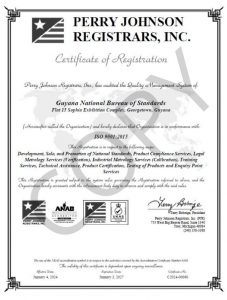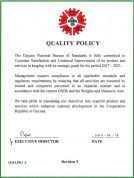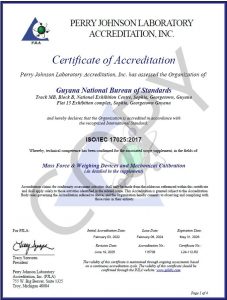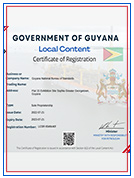In our evermore complex, interconnected world, with health systems undergoing new challenges and stresses, risk management in the healthcare industry has never been more important. ISO standards play a significant role in matching clinical quality with patient safety and best practice, helping not only to deal with risks but also to prevent them in the first place.
The reality is only the lucky few get through life in continuously good health, free from the aches and pains of growing older. However, not many of us escape painful and debilitating ailments, such as sore joints that eventually require artificial replacements, which causes us to resort to health professionals and the healthcare industry in search of cures.
According to Forbes magazine, between 2015 and 2030, the number of people in the world age 60 or over is expected to grow by 56 %, from just over 900 million to nearly 1.5 billion. This is a lot of older people, with older-people ailments, that will present the healthcare industry with huge challenges. Further, diets high in processed foods have led to an increase in western diseases, such as obesity, heart disease and diabetes, and the healthcare industry, which comprises medical science, biotechnology, medical devices, services and pharmaceuticals, will have to come up with creative solutions to the issue of chronic disease.
When healthcare systems come under pressure, it is important to ensure that patient safety remains at the same high level. Nevertheless, error and adverse events can always occur in medical procedures. World Health Organization (WHO) data and statistics for the European Union, for example, show that “medical errors and healthcare-related adverse events occur in 8 % to 12 % of hospitalizations.”
All of this underscores the need for efficient risk management systems. What tools are at hand to reduce the risks associated with medical devices, including the risk of human error? Many ISO standards are involved in risk management in the healthcare industry.
ISO 14971 is a standard for the application of risk management to the design and manufacture of medical devices. According to Jos van Vroonhoven, Senior Manager Standardization at electronics multinational Philips, the standard is globally recognized by regulatory authorities as the best standard for risk management of medical devices. This, he says, is one of the major benefits for companies like Philips of using ISO 14971.
Risk management in the healthcare industry also extends to medical laboratories, which are a key component in healthcare. Essential work is done in these laboratories in testing clinical specimens to get information about the health of a patient regarding the diagnosis, treatment and prevention of disease. The credibility of medical laboratories is paramount to the health and safety of the patients relying on the testing services provided by these labs. The ISO 22367 standard (in development), deals with the reduction of error in medical laboratories through risk management and continual improvement.
Willem Huisman, registered in Europe as a medical laboratory specialist in clinical chemistry, explains that the new edition of ISO 22367 lays out quite extensively in its annexes how risk management can be applied in the medical laboratory. “It helps to understand,” he says, “how the risk management approach can really contribute to patient safety without spending more money and efforts than is necessary. It helps to focus on the processes that are most risky and to be more lenient on others.” He cites as an example the frequency of internal quality control samples: frequent where needed and less frequent where possible. The end results, he says, “can lead to lower costs in total with higher quality for patients”.
Finally, what we can all agree is that when it comes to healthcare, there is no room for errors as these can heighten risks to those depending on treatment provided in the sector. The International Organisation for Standardisation continues to develop the requisite standards that are adopted and used globally to mitigate risks in the use medical products, practices, and equipment available to treat patients who are seeking healthcare solutions.






